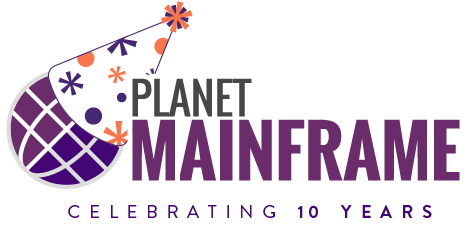IBM’s zPDT Decision Risks Mid-Tier ISVs and Mainframe Innovation
I’ve been a passionate mainframe (System z) advocate for over 45 years and a staunch supporter of IBM and most of their decisions.
However, when I received an email from IBM on 30 September 2025 announcing, with minimal notice, the discontinuation of the Independent Software Vendors (ISV) zPDT program, I was stunned.
Sitting on the train to London that morning, I opened, read, and then closed the email in disbelief. I simply couldn’t accept what I’d just read.
This is version 3 of the article, and I have struggled with the tone and stance I ultimately wanted to take on this. I shared version 2 with several of the concerned ISVs and with IBM itself. I wanted to give IBM the opportunity to correct any of my musings and provide any additional context around the decision.
I spent an hour on a call with a VP at IBM to discuss the issue, and this article, version 3, contains some of the feedback I received from IBM.
What is zPDT, and Why It’s Essential to the ISV Community
The zPDT is an emulated IBM mainframe environment that runs on standard computing hardware, such as UNIX or Windows servers.
ISVs have relied on zPDT and its predecessors for decades as their primary development, test, and delivery platforms, offering full system control and the flexibility to scale as needed.
Because zPDT operates on comparatively inexpensive hardware, ISVs can avoid the high costs associated with IBM-hosted environments where CPU usage is often metered and long-running jobs or started tasks (STCs) can quickly become prohibitively expensive.
“zPDT delivers the functionality, performance, and autonomy ISVs require, without the substantial financial burden of running on a physical IBM Z system.” – Mark Wilson
In essence, zPDT delivers the functionality, performance, and autonomy ISVs require, without the substantial financial burden of running on a physical IBM Z system.
Why Discontinue Support For zPDT Standalone
IBM Reasoning
Several email exchanges, online meetings, and even a round-table discussion at the recent GS-UK conference took place with IBM. None of these gave myself – nor any ISVs I’d spoken with – a clear understanding of why IBM made this decision, or any indication that they appreciate the profound impact it will have on much of the ISV community.
Some of the reasons IBM had stated are:
- Several ISVs have asked for much simpler, easier-to-manage development environments for their products
- JAVA performance is poor on an emulated solution
- IBM’s desire to give all ISVs a better experience running on real z hardware
Personal Opinion
Having discussed this with IBM, I truly believe IBM has uncovered some misuse of zPDT or even ADCD. IBM was guarded about any details for obvious reasons. My fear with IBM ending support as a reaction to those who want to do something illegally is just that they will find another way, dare I mention Hercules at this point!
It does feel as though some bad actors have really messed this up for those of us who follow the rules and have derived great value from what is a great solution.
Partner Plus Communication
Timing is everything in life, and it’s truly ironic that, the day before the ISV zPDT notification, IBM Partner Plus sent out an email titled: “Our common commitment to ethical conduct” stating:
“Every time you talk to a customer or make a decision, you’re showing what our partnership is all about trust, integrity, and doing things the right way.” – IBM Partner Plus email
I am not sure the communication around the decision IBM has made is in any way in the spirit of partnership for those of us who haven’t done anything wrong.
Vertali Response
From Vertali’s perspective, we rely on zVM and maintain several Sysplex environments to test and support our products. The so-called replacement for zPDT, HDISV, currently does not support z/VM or Sysplex configurations.
IBM has stated that the HDISV solution will have zVM and Sysplex support, and they want to work with the affected ISVs to solve all the issues we, the ISVs, perceive with the proposed HDISV solution. One unconfirmed rumour is that IBM will continue to use zPDT internally and that it’s only been withdrawn for external use — which seems very unfair to me if true!
I contacted a local IBM Business Partner, who estimated that a z16 A02 rack-mounted system would cost more than £350,000 (USD 458,000), and that’s before adding any disk or a backup solution. I will have a very difficult time explaining this to my Financial Director.
“An IBM Business Partner estimated that a z16 A02 rack-mounted system would cost more than £350,000.” — Mark
On-Prem or Cloud
Many of IBM’s clients depend heavily on their partnerships with ISVs, and this decision will inevitably have a negative impact on both.
IBM has stated that it is looking to create a bundled offering for hardware that will significantly reduce the cost of an on-premise solution for those who don’t want to use the HDISV offering.
“A cloud solution is just someone else’s computer!” – Mark
I know several other vendors, such as Vanguard, Trident, Action Software, and many other companies that will want their own on-premise solution, as we all know, a cloud solution is just someone else’s computer!
Security Concerns
There has been considerable email traffic across various forums and zPDT groups, with numerous concerns raised. In my opinion, one of the most serious issues is security. During one of my discussions with IBM, I was advised that we should not store our source code on any of the proposed hosted solutions, and I was assured that the environment is secure.
As someone who regularly conducts security assessments and penetration tests, I can confidently say that I have never encountered a system without vulnerabilities.
“As someone who regularly conducts security assessments and penetration tests, I can confidently say that I have never encountered a system without vulnerabilities.” – Mark Wilson
Even if source code were excluded, ISV binaries could still be reverse-engineered, and with IBM retaining full hardware-level control, they would have the technical capability to potentially copy any volume without the hosted ISVs knowledge.
Data Sovereignty
Another challenge for IBM is that of “Data Sovereignty”. The HDISV is a US-based solution, and for many ISVs outside the USA, this will be an issue when sending system information and dumps, etc., outside of Europe.
IBM doesn’t currently have a European-based solution, though it has some options it’s considering.
I also discussed with IBM the possibility of several ISVs coming together as a group and purchasing a single, larger z processor. Allowing them to share the purchase, maintenance, and running costs (power, people, etc).
Unfortunately, the current zOPD software licence prohibits that. I think this is one IBM could fix quite quickly. It could be a great solution for certain ISVs, who I believe would be quite happy to give IBM the right to come and audit the usage of the solution.
Where Does This Leave Us
I don’t believe IBM fully appreciates the level of disruption this decision will inflict on mid-tier and smaller ISVs, nor the depth of frustration and sense of being let down that so many of them have expressed. This move has already caused a visible erosion of trust across the ISV community.
“zPDT is going away and I don’t believe there is anything the ISV community can do to change that.” – Mark Wilson
zPDT has proven to be a stable, effective, and affordable platform for most ISVs whose businesses depend on it. Removing it is a big blow for many of the ISVs and could undermine the very ecosystem that has supported IBM’s mainframe success for decades.
Proposed Solutions
IBM must step up and provide the solutions that have been discussed:
- HDISV support for zVM
- HDISV support for Sysplex
- Build a European-based HDISV or work with a partner to build it
- Offer affordable, on-premise hardware bundles for those ISVs who don’t want to use — or who don’t trust — a cloud-based solution
- Potentially create a zOPD licence that can be used on z hardware alongside other zOPD licensed users
IBM must mitigate the significant disruption this change will cause to the ISV community, a community that plays a critical role in supporting IBM clients worldwide.









Absolutely agree with you Mark! HDISV does not seem like a good way forward even if solutions are found to the first 3 of your items listed.